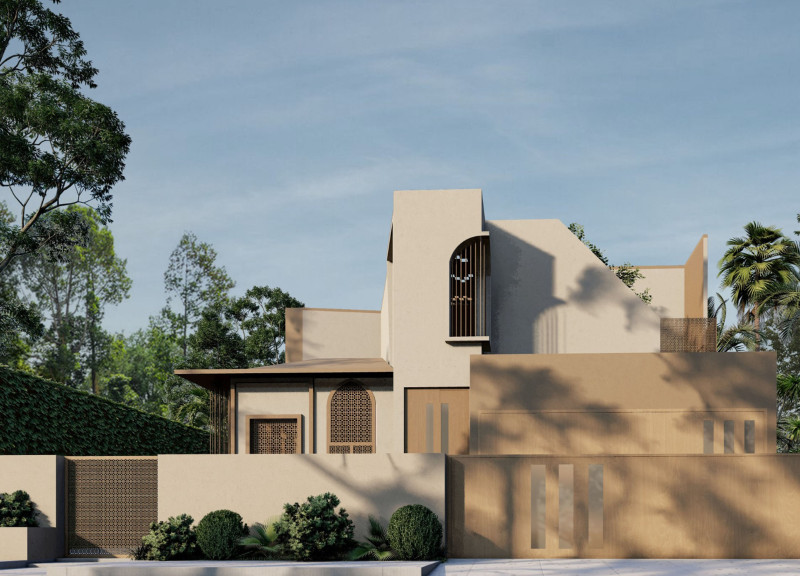5 key facts about this project
This architectural project is characterized by its modern and functional design, aimed at fostering a harmonious relationship between user experience and environmental sustainability. The primary function of the building serves as a multi-purpose facility that adapts to various activities, promoting community engagement and enhancing the social fabric of the area. The layout is strategically planned to accommodate both private and public spaces, ensuring that individuals have the opportunity to interact in a welcoming setting.
Key elements of this project include its unique building form, which showcases a careful balance between massing and open spaces. The design embraces an organic flow, with lines that guide visitors through various areas, effectively blurring the boundaries between the interior and exterior. Large windows and strategically placed openings allow natural light to permeate the space, creating a warm and inviting atmosphere while minimizing the reliance on artificial lighting. This approach not only optimizes energy efficiency but also connects occupants with the outdoor environment.
The material palette selected for this project plays a crucial role in both its functionality and aesthetic character. Authentic materials such as local stone, timber, and glass were chosen not only for their durability but also for their ability to reflect the surrounding landscape. The use of sustainable building materials underscores a commitment to environmental stewardship and demonstrates a forward-thinking approach to architecture. This careful selection enhances the building’s integration into its context, promoting a sense of continuity with the local architecture.
A notable aspect of the design is its innovative approach to landscaping, which complements the building itself. Outdoor areas are thoughtfully designed to provide spaces for gathering, relaxation, and recreation, enhancing the user experience. The landscaping features native plants that require minimal maintenance, aligning with the overall sustainability goals of the project. Pathways meander through the site, encouraging exploration and providing a natural flow that directs users to different functional areas.
The integration of technology within the architectural framework is another remarkable feature of this project. Smart building systems have been incorporated to enhance user convenience and operational efficiency. From energy monitoring systems to user-friendly interfaces, the design embraces modern technology while ensuring that it remains unobtrusive and complementary to the overall aesthetic.
In terms of accessibility, the project prioritizes inclusivity, featuring amenities that cater to a diverse range of users. Careful attention has been paid to create an environment that supports mobility and independence, allowing individuals of all abilities to engage fully with the space. This inclusive approach not only broadens the user base but also reinforces the project’s role as a community hub.
Unique design strategies employed throughout this project serve to challenge traditional notions of space and functionality. By combining flexible layouts with environmentally sensitive solutions, the building adapts to the ever-changing needs of its users. Furthermore, the emphasis on natural light, open spaces, and vibrant landscaping fosters a sense of well-being, encouraging occupants to spend time in and around the facility.
In conclusion, the architectural design presented in this project exemplifies a contemporary response to user needs, environmental considerations, and community engagement. Its thoughtful integration of materials, innovative design approaches, and attention to detail reflect a holistic understanding of modern architecture. Readers interested in exploring the finer details of this project are encouraged to review the architectural plans, sections, and designs available for a comprehensive understanding of the architectural ideas that shaped this compelling endeavor.


























